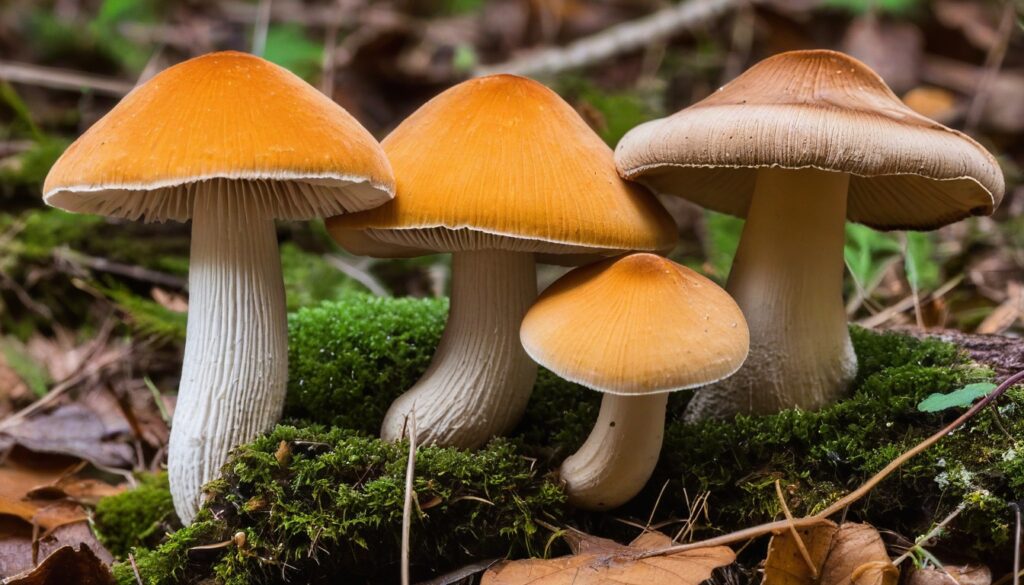If you’re a nature enthusiast and reside in Ohio, why not explore the world of mushrooms? Ohio is home to myriad mushroom species, ranging from tiny caps to large, fleshy ones that can be found flourishing in its forests and woodlands. Mushrooms are a great source of nutrients and are known to possess various health benefits, making them a delightful addition to meals.
In this article, we’ll take you on a comprehensive journey of Ohio’s common mushrooms, providing you expert tips on how to identify, find, and harvest them. We’ll also serve up some of the best cooking and preserving techniques to turn your mushroom harvest into delicious edible treats. Whether you’re a seasoned forager or someone looking to explore Ohio’s woodland wonders, you’ll find all the information you need here.
Key Takeaways:
- Ohio is home to a diverse range of mushroom species.
- Mushrooms offer numerous health benefits.
- We will provide expert tips on how to identify Ohio’s common mushrooms.
- You’ll learn how to find and harvest these mushrooms safely and ethically.
- We’ll offer some of the best cooking and preserving techniques to turn your mushroom harvest into delicious edible treats.
Forest Floor Explorers: Ohio’s Mushroom Diversity
Ohio’s forests and woodlands host a vast and diverse range of mushroom species. From the towering trees to the decaying logs, each habitat has a distinct community of fungi that contribute to Ohio’s mushroom diversity.
One of the key factors influencing Ohio’s mushroom diversity is the region’s climate, which varies greatly across the state. Areas with higher rainfall and humidity levels, such as eastern and southern Ohio, tend to have a higher species diversity than drier regions like the western and northwestern parts of the state.
The time of year is also an important factor to consider when foraging for mushrooms in Ohio. While some species like Morels and Chanterelles prefer the spring, others like the Chicken of the Woods, Black Trumpet, and Hedgehogs can be found in the fall.
Habitats that influence Ohio’s Mushroom Diversity
|
Habitat |
Key Mushroom Species |
|---|---|
|
Deciduous Forests |
Morels, Chanterelles, Chicken of the Woods, and the delicious Lobster Mushroom. |
|
Coniferous Forests | |
|
Wetlands |
The rare and elusive Black Trumpet mushroom. |
|
Urban Areas |
The adaptable and widespread Giant Puffball mushroom. |
Understanding Ohio’s mushroom habitats and the species that thrive in them can help foragers better target their searches and increase the likelihood of a successful haul. So go ahead and explore the forest floor, and who knows what amazing mushrooms you might discover!
The Pioneers: Ohio’s Edible Mushrooms
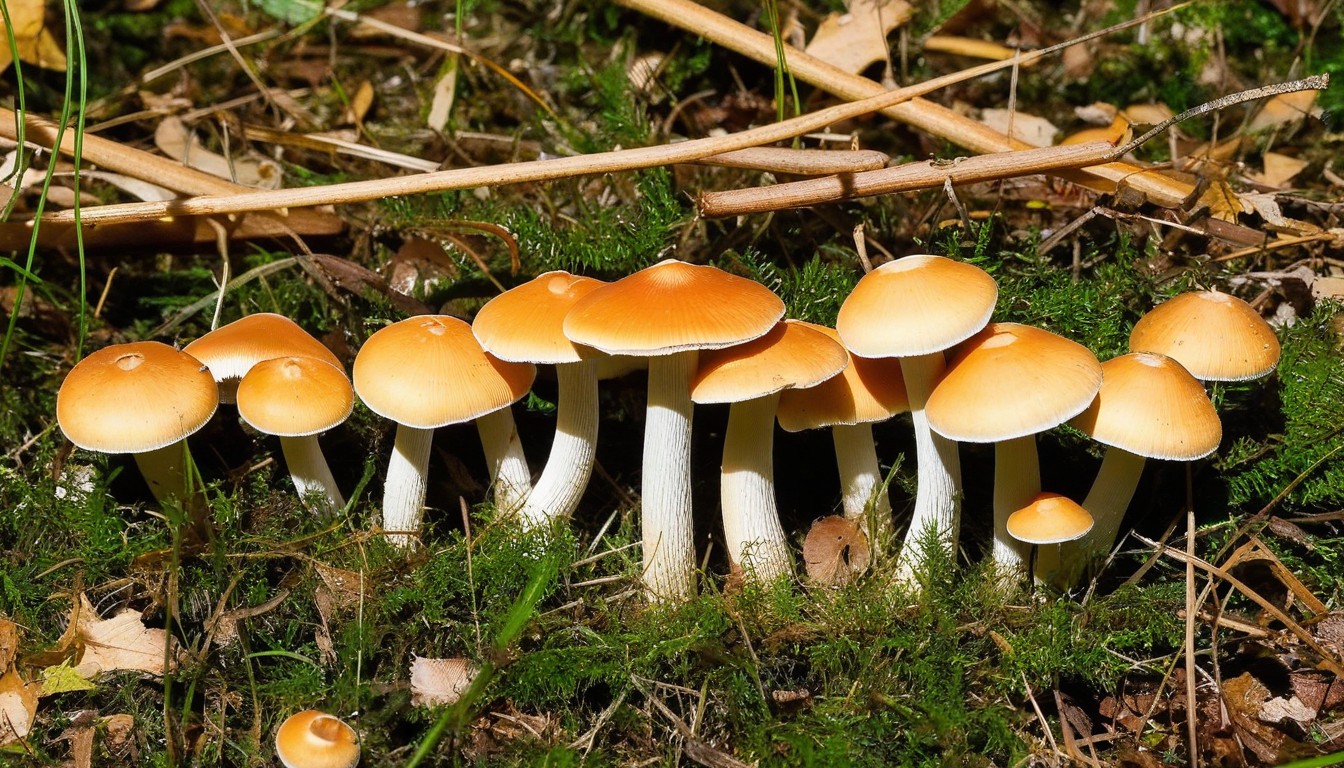
Ohio is a treasure trove of delicious, edible mushrooms, and we’re excited to share some of the most popular varieties with you.
Identification Tips
When foraging for mushrooms, it’s essential to properly identify each species to avoid eating a poisonous lookalike. Here are some expert tips to help you safely collect and enjoy your harvest:
- Morels: These prized mushrooms have a tall, honeycomb-shaped cap and a hollow, creamy-white stem. Look for them in early spring, usually in wooded areas near rivers and streams.
- Chanterelles: These bright-yellow, trumpet-shaped mushrooms have a fruity, apricot-like scent. They prefer warm, moist environments and can be found in forests and near the roots of trees from summer through fall.
- Chicken of the Woods: This meaty mushroom has the texture of cooked chicken and can be found growing on tree trunks and logs from late summer through fall. It has a bright orange-yellow cap with a cream-colored underside.
Recipes to Try
Once you’ve collected your edible mushrooms, the fun really begins! Try incorporating them into these tasty recipes:
|
Recipe |
Description |
|---|---|
|
Morel Risotto |
A creamy, comforting dish that celebrates the earthy flavor of morels. |
|
Chanterelle Pasta |
A simple yet luxurious pasta dish featuring the bright, fruity flavor of chanterelles. |
|
Chicken of the Woods Tacos |
A vegan-friendly take on the classic taco, using meaty chicken of the woods mushrooms as the star ingredient. |
These recipes are just the tip of the iceberg when it comes to preparing Ohio’s edible mushrooms. Be creative and experiment with different flavor combinations to make the most of your foraged finds!
The Hidden Gems: Ohio’s Medicinal Mushrooms
Ohio’s forests are home to many varieties of mushrooms that not only taste good but are also beneficial for health. These medicinal mushrooms can help boost the immune system, improve mental clarity, and even reduce inflammation. Here are some of the most popular medicinal mushrooms found in Ohio:
|
Mushroom |
Benefits |
|---|---|
|
Reishi (Ganoderma Lucidum) |
Regulates blood pressure, reduces inflammation, boosts the immune system, fights fatigue. |
|
Turkey Tail (Trametes Versicolor) |
Has anti-tumor properties, improves gut health, boosts the immune system, and supports liver function. |
|
Lion’s Mane (Hericium Erinaceus) |
Improves cognitive function, promotes nerve regeneration, reduces inflammation, and boosts the immune system. |
There are many ways to incorporate medicinal mushrooms into your wellness routine. You can brew them as a tea, blend them into smoothies, cook them in soups and stews, or even take them in supplement form. However, it’s important to note that some medicinal mushrooms can interact with certain medications, so it’s always best to consult with a healthcare professional before adding them to your diet.
The Mystical Beauties: Ohio’s Psychedelic Mushrooms
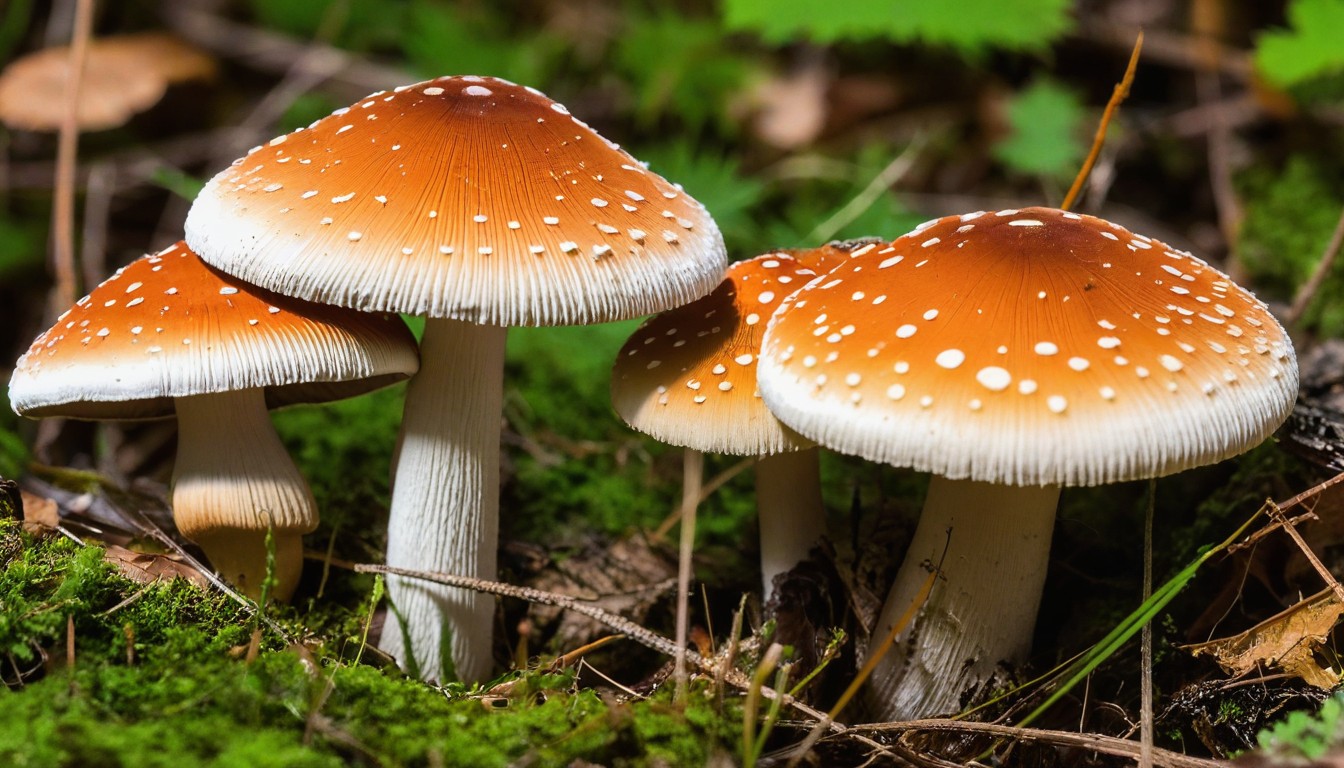
Ohio is home to several species of mushrooms that contain psychoactive compounds, also known as psychedelic mushrooms. These fungi have been used for centuries for their mind-altering properties.
The most well-known species of psychedelic mushrooms found in Ohio include Psilocybe cyanescens, Psilocybe cubensis, and Psilocybe semilanceata. These mushrooms contain psilocybin, a powerful hallucinogen that can lead to altered perceptions, experiences, and emotions.
It’s important to note that the possession, sale, and cultivation of psychedelic mushrooms in Ohio is illegal. However, studies have shown promising results in the therapeutic potential of these compounds, specifically in treating depression, anxiety, and addiction.
When consumed, psychedelic mushrooms can lead to profound psychological and emotional experiences. It’s crucial to approach these substances with caution and respect, and only use them in a safe and controlled environment.
The Risks and Responsibilities
Using psychedelic mushrooms comes with potential risks and responsibilities. It’s essential to understand the effects of these substances and to have a support system in place before consuming them.
“Psychedelic experiences are notoriously difficult to explain. They often feel like a journey to another dimension where time and space don’t exist in their conventional sense — a state of mind where everything is made of something else, and something else is everything. The psychedelic journey is simply exploring that state of mind.”
– Michael Pollan, author of How to Change Your Mind: What the New Science of Psychedelics Teaches Us About Consciousness, Dying, Addiction, Depression, and Transcendence
Potential risks of psychedelic mushroom consumption include:
- Bad trips, which can lead to anxiety, paranoia, and confusion
- Hallucinations that could be overwhelming or disturbing
- Physical side effects such as nausea, vomiting, and sweating
- In rare cases, psychosis, seizures, or other serious health problems
It’s also important to consider responsible usage practices, such as dosing appropriately and avoiding consumption if you have a history of mental illness or are on medication. Additionally, always use a trusted source to obtain these substances and never consume them while driving or operating heavy machinery.
Final Thoughts
Ohio’s psychedelic mushrooms may offer a unique and profound experience, but it’s important to approach them with caution, respect, and responsibility. Always research and educate yourself about the effects and risks of these substances, and seek support from a trusted individual or professional if needed.
The Poisonous Dangers: Know Before You Forage
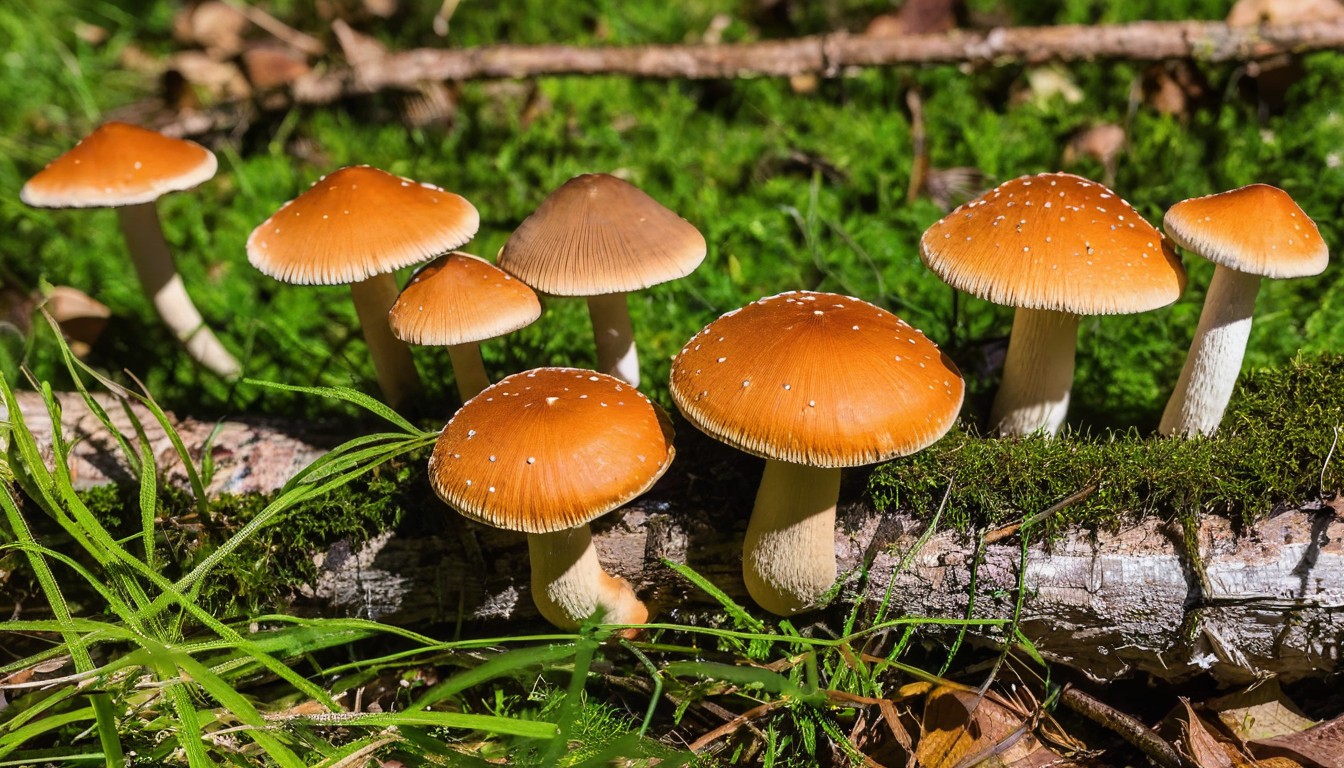
Before heading out to forage for mushrooms in Ohio, it’s crucial to educate yourself on the potentially poisonous varieties that are common in the area. While the thought of finding a rare or unusual mushroom may excite you, it’s important to avoid taking unnecessary risks.
Ohio is home to a range of poisonous mushrooms that can cause illness, or even death. Some of the most common toxic varieties include the Destroying Angels, False Morels, and Deadly Galerina. It’s critical to be able to identify these species and to never consume them, even in small amounts.
If you’re unsure whether a mushroom is safe to eat, it’s best to err on the side of caution and avoid consuming it altogether. Consult an experienced forager or mycologist to help you identify potentially poisonous species.
Here are some essential tips to help differentiate poisonous mushrooms from edible varieties:
|
Poisonous Mushrooms |
Edible Mushrooms |
|---|---|
|
Cap: often slimy or sticky, with a white, yellow, or greenish color |
Cap: typically dry, with a brown, red, or grey color |
|
Gills: often white or yellow, and can leave brown or black prints |
Gills: primarily light in color, with no prints left |
|
Stem: often white with a ring or cup-like structure at the base |
Stem: typically solid and similar in color to the cap |
By familiarizing yourself with the distinguishing characteristics of poisonous and edible mushrooms and adhering to safe foraging practices, you can reduce your risk of illness or injury. Always be certain of a mushroom’s identity before consuming it, and enjoy your foraging adventures safely!
Seasons of Fungi: When and Where to Look
Ohio’s mushrooms have diverse seasonal patterns that determine their appearance in the different parts of the state. Identifying the best locations and times of the year to search for specific species is crucial in making the most of your foraging experience. Here is a guide to some of Ohio’s prime mushroom hunting spots:
|
Mushroom Species |
Best Season to Search |
Prime Location |
|---|---|---|
|
Morel Mushroom |
Spring (April-June) |
Wooded areas near dead or dying trees |
|
Chanterelle Mushroom |
Summer-Fall (July-September) |
Forests with oak trees, beech trees, and coniferous trees |
|
Hedgehog Mushroom |
Summer-Fall (August-October) |
Deciduous forests with acidic soil |
|
Hen of the Woods Mushroom |
Fall (September-November) |
Near the base of oak trees |
It is crucial to take essential precautions while foraging for mushrooms, including wearing appropriate clothing, carrying a basket or mesh bag for collecting mushrooms, and bringing a field guide to aid you in identifying different species. Happy foraging!
The Art of Foraging: Identification Techniques
One of the most critical aspects of mushroom foraging is proper identification. Fungi can come in a variety of shapes, sizes, and colors, making it challenging for beginners to recognize different species. However, with expert identification techniques, you can quickly learn to distinguish between edible, medicinal, and poisonous mushrooms.
Key Features to Look For
The following are some key features to consider when identifying mushrooms:
- Caps: Examine the shape, size, color, and texture of the cap. Some caps are smooth, while others are scaly or wavy. Look for distinctive features, such as knobs, umbos, or striations.
- Stems: Observe the length, thickness, texture, and color of the stem. Some stems are hollow, while others are solid. Look for unique characteristics, such as rings, volvas, or bulbous bases.
- Gills: Check the color, arrangement, and spacing of the gills under the cap. Some mushrooms have cross-veins or forked gills, while others have adnate gills that are attached to the stem.
- Spore prints: Take a spore print to determine the color of the mushroom’s spores. Cut off the cap of the mushroom and place it gill-side down on a white or black piece of paper. Cover it with a bowl or glass and leave it overnight. The spores will drop onto the paper, revealing their color.
Expert Tips for Identification
When in doubt, it’s always best to err on the side of caution and avoid eating any mushroom you are unsure about. However, the following tips can help you confidently identify safe and delicious fungi:
“When in the woods, take a field guide or reliable app with pictures, and try to find a mentor who can help you identify mushrooms. Start with the easy-to-identify species, and gradually work your way up to more challenging varieties. Always double-check your identification using multiple sources and cross-referencing features.”
Avoid Lookalikes
Some mushrooms can resemble non-toxic edibles, making it essential to know the difference between them. For example, the deadly Galerina marginata looks similar to the edible honey mushrooms but contains toxins that can cause liver failure. Likewise, the toxic Jack-o-lantern mushroom can be mistaken for the edible chanterelle, but can cause severe gastrointestinal symptoms if ingested.
|
Species |
Edible or Poisonous |
Key Identification Features |
|---|---|---|
|
Morel |
Edible |
Honeycomb cap, no gills, hollow stem |
|
Chicken of the Woods |
Edible |
Bright orange-yellow shelves, no gills, grows in clusters on logs or trees |
|
Death Cap |
Poisonous |
Smooth, greenish-yellow cap, white gills, deadly toxic |
|
Chanterelle |
Edible |
Fruity aroma, yellow-orange cap, false gills, forked veins |
Remember, accurate identification is critical when foraging for mushrooms. With practice and experience, you can confidently identify safe and delicious mushrooms and avoid potentially toxic lookalikes.
Foraging Ethics: Leave No Trace
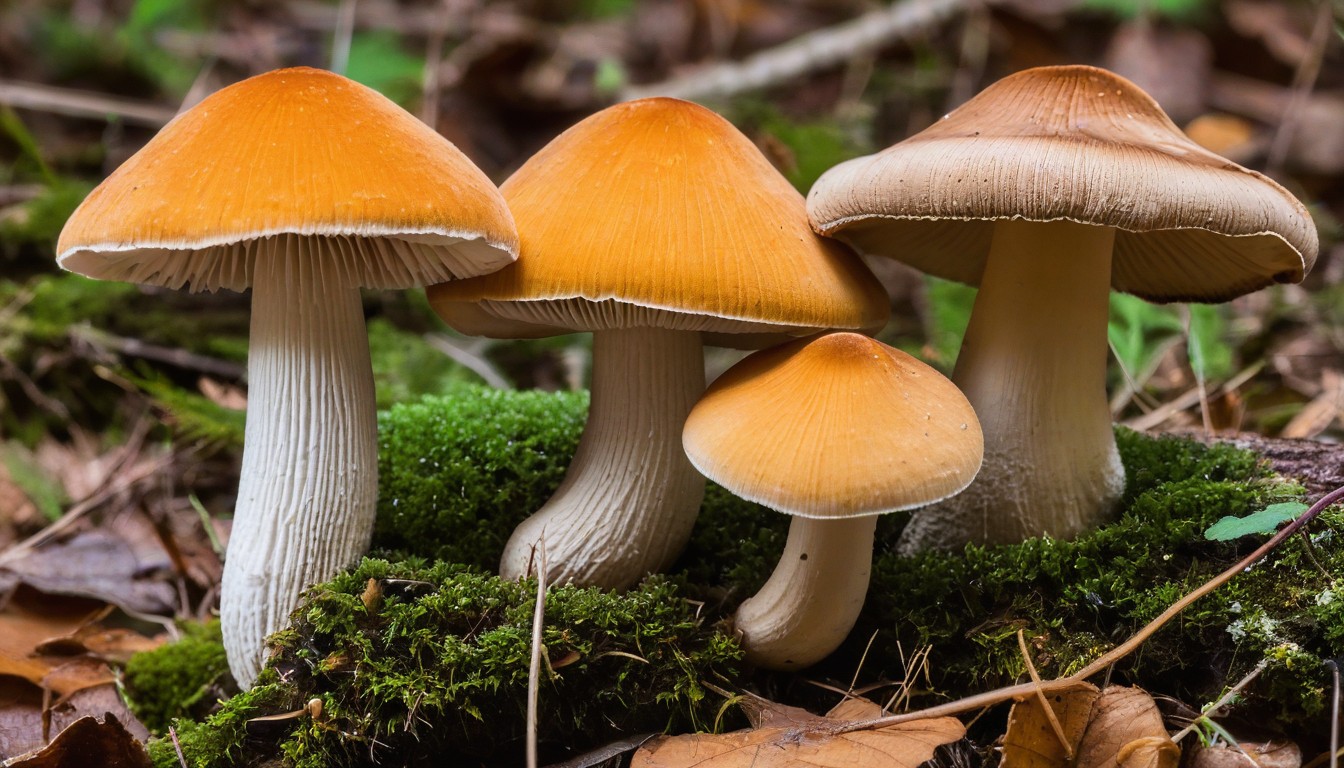
Foraging for mushrooms can be a fun and rewarding adventure, but it’s important to approach it with a set of ethical principles in mind. The first and most crucial principle of foraging is to leave no trace. This means that you should avoid damaging the natural environment as much as possible, and ensure that you don’t take more than your fair share of mushrooms.
One way to leave no trace is to stay on established trails and paths when foraging. This helps to minimize damage to the surrounding flora and fauna, while also making it easier to find your way back to your starting point.
Another way to practice responsible foraging is to pick mushrooms by hand, rather than using tools like knives or trowels. These tools can cause unnecessary damage to the surrounding area, and also increase the risk of accidentally harvesting the wrong type of mushroom.
When harvesting mushrooms, it’s important to only take what you need. This ensures that there will be enough mushrooms left for other foragers and for the ecosystem to maintain itself. It’s also important to avoid over-harvesting rare or endangered mushroom species, and to be aware of any local regulations or restrictions on mushroom harvesting.
Finally, it’s crucial to properly dispose of any waste or refuse that you generate while foraging. This includes any mushroom stems or other parts that you don’t plan on using, as well as any litter or other trash that you generate while in the field.
Summary:
- Leave no trace when foraging by minimizing damage to the environment
- Avoid using tools and only harvest what you need
- Be mindful of local regulations and rare/endangered species
- Properly dispose of any waste generated while foraging
Getting Started: Essential Tools and Safety Precautions
Before embarking on your mushroom foraging journey, it’s essential to equip yourself with the right tools and prioritize your safety. Here are some recommendations to ensure a successful and secure experience:
Mushroom Foraging Tools
Having the proper tools can make all the difference when foraging for mushrooms. Here are some essentials to include in your foraging kit:
|
Tool |
Description |
|---|---|
|
Basket or mesh bag |
Allows air circulation and helps to preserve the mushrooms by keeping them dry. |
|
Mushroom knife or scissors |
Allows for precise cutting of mushroom stems without damaging the surrounding vegetation. |
|
Whistle |
Can be used to signal for help in an emergency, and is especially important when foraging alone. |
|
Compass or GPS |
Helps to prevent getting lost in unfamiliar terrain. |
Safety Precautions for Foraging
Foraging for mushrooms can be a fun and rewarding experience, but it’s important to prioritize your safety. Here are some tips to keep in mind:
- Always wear appropriate clothing and footwear, including long pants and sturdy boots.
- Bring a first aid kit with items such as bandages, tweezers, and insect repellent.
- Stay on designated trails and avoid wandering off into unfamiliar areas.
- Be aware of your surroundings and watch out for hazards such as poison ivy, snakes, and uneven terrain.
- Do not consume any mushroom unless you are 100% certain of its identification.
- Always get permission from the landowner before foraging on private property.
Remember, safety is key when it comes to mushroom foraging. By equipping yourself with the right tools and taking necessary precautions, you can have a successful and enjoyable experience.
Cooking and Preserving: Culinary Adventures with Mushrooms
One of the joys of foraging for mushrooms is the opportunity to create delectable dishes with your finds. Ohio’s common mushrooms offer a range of flavors, from nutty to earthy, that can be incorporated into many recipes.
Cooking Mushrooms
The key to cooking mushrooms is to start with a dry pan to prevent them from becoming watery. Make sure to use a sufficient amount of oil or butter for the mushrooms to cook evenly and not stick to the pan. Depending on the type of mushrooms, you can sauté, roast, bake, or grill them to perfection.
|
Mushroom Type |
Cooking Technique |
Recipe Ideas |
|---|---|---|
|
Morels |
Sauté, roast, or grill |
Morel risotto, morel omelet, grilled morels with lemon and Parmesan |
|
Chanterelles |
Sauté, bake, or grill |
Chanterelle pasta, chanterelle quiche, grilled chanterelles with garlic and herbs |
|
Chicken of the Woods |
Sauté, roast, or fry |
Chicken of the woods stir-fry, chicken of the woods tacos, fried chicken of the woods sandwiches |
Preserving Mushrooms
If you have a surplus of mushrooms, preserving them can be a great way to prolong their shelf life and enjoy them throughout the year. The two most popular methods for preserving mushrooms are drying and freezing.
- Drying Mushrooms: Cut the mushrooms into thin slices and lay them out on a baking sheet. Dry them in the oven at a low temperature or using a dehydrator until they are crumbly.
- Freezing Mushrooms: Clean the mushrooms and cut them into the desired size. Blanch them in boiling water for a few seconds, then drain and freeze them in a single layer on a baking sheet. Once frozen, transfer them to a resealable bag or container.
With so many possibilities, cooking and preserving Ohio’s common mushrooms is a delightful adventure. Experiment with different techniques and recipes to savor the full range of flavors and textures.
Conclusion
In conclusion, exploring the world of common mushrooms in Ohio can be an incredibly rewarding experience. By learning about the various species, identification techniques, ethical practices, and safety guidelines, you can embark on a foraging journey that is both fulfilling and respectful of nature’s offerings. Remember to always leave no trace, be mindful of the environment, and stay safe while enjoying the great outdoors.
With the tasty culinary possibilities presented by Ohio’s common mushrooms, you can indulge in some delicious culinary adventures that incorporate these flavorful and nutritious treats. From cooking techniques to preservation methods, there are various ways to savor the unique flavors of your foraged finds.
So what are you waiting for? Grab your essential tools, gear up with safety precautions, and head out into the woods to explore the diverse world of Ohio’s mushrooms. Whether you’re a seasoned forager or just starting out, there’s always something new to discover. Happy foraging!
FAQ
What are the common mushrooms found in Ohio?
The common mushrooms found in Ohio include Morels, Chanterelles, Chicken of the Woods, and many others. You can find a comprehensive guide to these mushrooms in our article.
Where can I find Ohio’s mushroom diversity?
Ohio’s mushroom diversity can be found in its forests and woodlands. We’ll explore the different habitats where these mushrooms thrive in our article.
What are the edible mushrooms in Ohio?
Edible mushrooms commonly found in Ohio include Morels, Chanterelles, and Chicken of the Woods. We’ll provide tips on how to identify these mushrooms and share delicious recipes in our article.
What are the medicinal mushrooms in Ohio?
Ohio is home to medicinal mushrooms like Reishi, Turkey Tail, and Lion’s Mane. Discover their healing properties and how to incorporate them into your wellness routine in our article.
Are there psychedelic mushrooms in Ohio?
Yes, Ohio is home to several species of psychedelic mushrooms. We’ll discuss their legality, responsible usage, and potential risks in our article.
Which mushrooms in Ohio are poisonous?
It’s important to know the poisonous mushrooms in Ohio to avoid foraging them. We’ll highlight the dangerous species and provide tips for differentiation in our article.
When and where should I look for mushrooms in Ohio?
Ohio’s mushrooms have seasonal patterns and optimal foraging locations throughout the state. We’ll guide you on the best times to search for mushrooms and recommend prime mushroom-hunting spots in our article.
How can I identify mushrooms while foraging?
Enhance your foraging skills with expert identification techniques. We’ll cover the key features to look for when identifying mushrooms, including their caps, stems, gills, and spore prints in our article.
What are the foraging ethics and practices?
Foraging ethics and responsible harvesting practices are crucial. Learn how to minimize your impact on the environment and ensure the sustainability of mushroom populations in our article.
What tools do I need for mushroom foraging in Ohio?
To ensure a successful and safe foraging experience, we recommend essential tools such as a mushroom knife, basket, and field guide. Our article provides further details and recommendations for gear and safety precautions.
How can I cook and preserve mushrooms?
Cooking and preserving mushrooms opens up a world of culinary adventures. Discover cooking techniques, preservation methods, and delectable mushroom recipes in our article.

